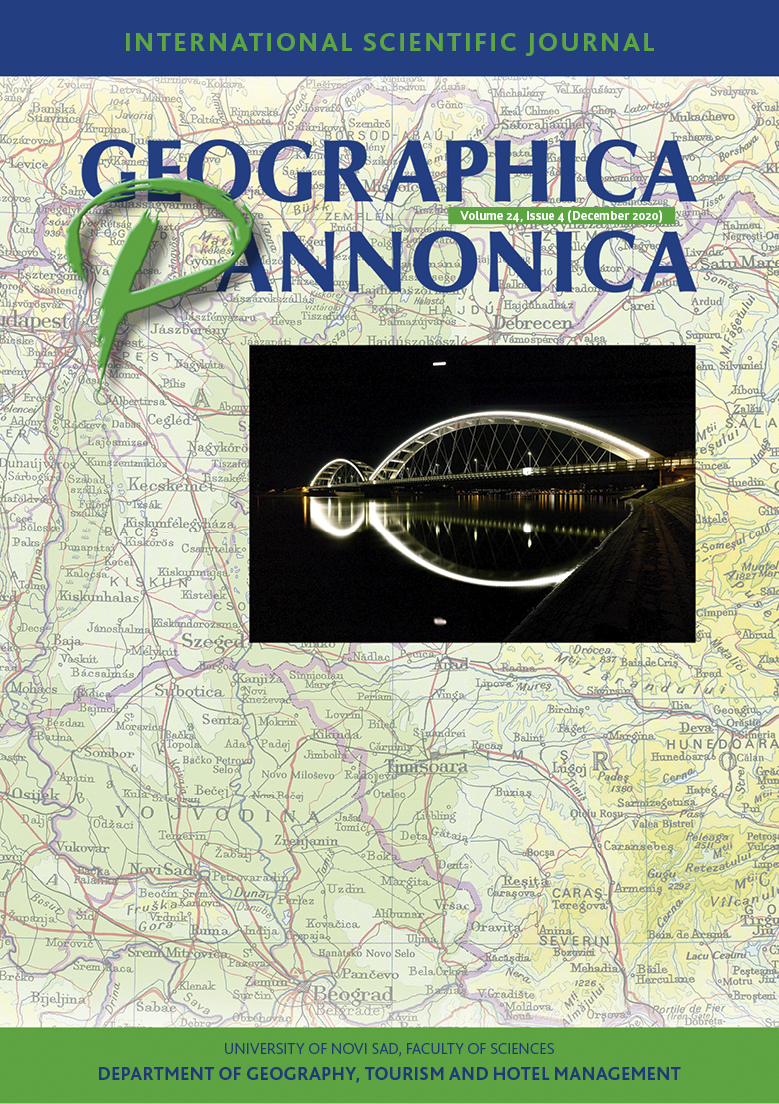Constructing a nation branding model – the case of Serbia
Abstract
This paper aims to understand the concept and fundamental terms related to nation branding as a strategic tool for improving Serbia’s international market position, a post-communist and former Yugoslav country. The author intends to gain insight into Serbia’s current brand perception as a developing country that can find an opportunity for rebirth and parting with the legacy implementation of the nation branding concept. The quantitative research methods were applied in this paper, and the questionnaire developed for the research investigated the perception of brand Serbia by leaning on Risitano’s framework. Our analysis finds that national treasury, people, tourism and business destination were recognized as the most important points for country and nation positioning.
References
Anholt, S. (2007). Competitive identity: The new brand management for nations, cities and regions, New York: PALGRAVE MACMILLAN.
Anholt, S. (2010). Definitions of place branding – Working towards a resolution. Place Branding and Public Diplomacy, 6(1), 1–10. https://doi.org/10.1057/pb.2010.3.
Anholt, S. (2014). Public Speaking, Past events. Available at: http://www.simonanholt.com/PublicSpeaking/publicspeaking-past-events.aspx [Accessed January 1, 2014].
Aronczyk, M. (2008). "Living the Brand": Nationality , Globality and the Identity Strategies of Nation Branding Consultants 1. International Journal of Communication, 2, 41–65. https://doi.org/ 1932-8036/20080041.
Cantone, L., Straordinario, P. & Risitano, M. (2005). Introduzione 1 . Il ruolo delle risorse specifiche e di contesto nello sviluppo sostenibile delle destinazioni turistiche., 1–31.
Chamber of Italian-Serbian Businessmen (2015). Doing Business in Serbia. Available at: http://www.ccis.rs/?page_id=343&&mid=11.
Endzina, I. & Luneva, L. (2004). Development of a national branding strategy: The case of Latvia. Place Branding and Public Diplomacy, 1(1), 94–105. https://doi.org/10.1057/palgrave.pb.5990009.
Florek, M. (2005). The country brand as a new challenge for Poland. Place Branding and Public Diplomacy, 1(2), 205–214. https://doi.org/10.1057/palgrave.pb.5990021
Gartner, W.C. & Ruzzier, M.K. (2011). Tourism Destination Brand Equity Dimensions: Renewal versus Repeat Market. Journal of Travel Research, 50(5), 471–481. https://doi.org/10.1177/0047287510379157
Hall, D. (2002). Brand development, tourism and national identity: The re-imaging of former Yugoslavia. Journal of Brand Management, 9(4), 323–334. https://doi.org/10.1057/palgrave.bm.2540081.
Kanaeva, N. (2012). Branding Post-Communist Nations Marketizing National Identitiesin the New Europe, New York: Routledge.
Konečnik, M. (2010). Destination branding: Theory and research, Saarbruecken: Lambert Academic Publishing.
Konecnik, M. & Go, F. (2007). Tourism destination brand identity: The case of Slovenia. Journal of Brand Management, 15(3), 177–189. https://doi.org/10.1057/palgrave.bm.2550114
Malhotra, N.K. (2007). Marketing Research, An Applied Orientation, Pearson Education.
Ministry of Foreign Affairs of the Republic of Serbia. (2014). Diaspora. Available at: http://www.mfa.gov.rs/en/consular-affairs/diaspora/diaspora-general-information.
Nath, P. (2007). MA Program 2007 - Research Methods (N1D042) Quantitative Methods 1A course handbook, Nottingham: Nottingham University Business School.
Nation branding. (2009). Country branding consultant Jose Filipe Torres on branding Serbia. Nation branding, 2–4.
National Bank of Serbia. (2013). Godišnji izveštaj o stabilnosti finansijskog sistema. Available at: http://www.nbs.rs/internet/cirilica/90/fs.html.
Statistical Office of RS. (2014). Aktuelni podaci Republika Srbija. Available at: http://webrzs.stat.gov.rs/WebSite/Public/PageView.aspx?pKey=2.
Novčić, B., Damnjanović, V. & Popesku, M. (2012). Serbia Brand Identity: Perspectives of Residents and Diaspora. EuroMed Journal of Business, 7(3), 256–267. doi: 10.5937/markt1504263N.
Novčić, B. & Štavljanin, V. (2015). Brendiranje nacije: Analiza brend identiteta Srbije. Časopis Marketing, 46(4), 263–275. doi: 10.5937/markt1504263N.
NTOS. (2007). Serbia: moments to remember, Belgrade.
NTOS. (1996). Serbia – Landscape painted from the heart, Belgrade.
Pallant, J. (2007). Spss Survival Manual A step by step guide to data analysis using SPSS for Windows (Version 10) 2nd ed., Berkshire: Open University.
Petranović, B. (1988). Istorija Jugoslavije 1918-1988, knjiga I – Kraljevina Jugoslavija 1914-1941, Beograd: Nolit.
PKS Milano Info. (2014). Aktuealno. Predstavništvo Privredne komore Srbije u Italiji. Available at: http://www.pks.rs/SADRZAJ/Files/3_PKSMilanoINFO-avgust2014.pdf.
Popesku, J. & Marić, R. (2003). Ecotourism Development As a Tool for Repositiong. In International Scientific Conference The Development and Potentials of Ecotourism on Balkan Peninsula’’. Pirot, Serbia.
Popesku, M., Damnjanović, V., Novčić, B., Premović, M. (2010). Serbia as Brand – Internal Perspective. In 3rd Annual EuroMed Conference of the EuroMed Academy of Business, Business Development Across Countries and Cultures. Nicosia, Cyprus.
Risitano, M. (2006). The role of destination branding in the tourism stakeholders system. The Campi Flegrei case. In IV International doctoral tourism and leisure colloquium. pp. 1–18.
Serbian Chamber of Commerce. (2015). Srbija otvorena za austrijske investitore, srpske firme za partnerstvo. Available at: http://www.pks.rs/Vesti.aspx?IDVestiDogadjaji=16959.
Serbian Chamber of Commerce. (2013). Srbija prvi put u suficitu sa Italijom. Časopis Korak, 18–19.
SIEPA. (2014). Investirajte u Srbiju! Available at: http://siepa.gov.rs/sr/files/pdf2010/Investirajte u Srbiju SIEPA_lat_dec2014.pdf.
Szondi, G. (2007). The role and challenges of country branding in transition countries: The Central and Eastern European experience. Place Branding and Public Diplomacy, 3, 8–20. https://doi.org/10.1057/palgrave.pb.6000044.
Tasci, A.D.A. & Kozak, M., 2006. Destination brands vs. destination images: Do we know what we mean? Journal of Vacation Marketing, 12(4), pp.299–317. https://doi.org/10.1177/1356766706067603.
The Economist, 2006. Happy days in Novi Sad. The Economist. Available at: http://www.economist.com/node/7155250 [Accessed January 1, 2014].

